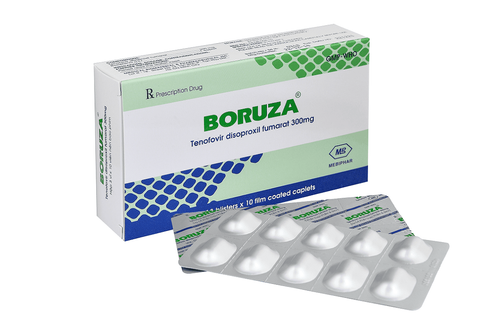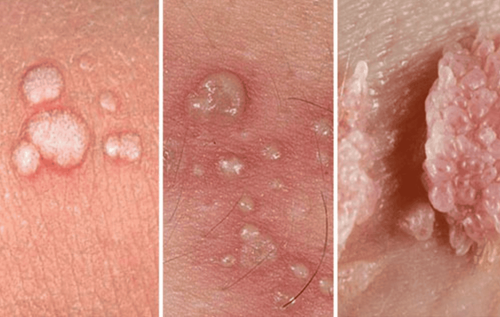This is an automatically translated article.
Smallpox is a viral disease characterized by pus-filled blisters. This is a highly contagious, unsightly and potentially life-threatening disease. Smallpox was eradicated in the early 1980s, but it is not out of the question that the disease could return. So what is the fastest cure for smallpox?
1. Learn more about smallpox
Smallpox is an infectious disease caused by the Variola virus throughout the body with a characteristic skin rash. Smallpox begins with a sudden high fever of 40 degrees Celsius, malaise, headache, weakness, severe back pain, sometimes the patient also has abdominal pain and vomiting. After 2-4 days, the temperature begins to drop and the patient's skin appears a rash.
Smallpox rash develops through successive stages:
Macule; papula (papula); vesicles (vesicule); Pustules are the last stage to appear in the 3rd, 4th week since the rash appeared. The lesions of the smallpox rash are deeply rooted in the reproductive cells of the epidermis, so when the smallpox scales are peeled off, they will leave scars, especially on the face, causing pitting. The smallpox rash appears in order first on the face, then on the trunk and limbs, more often on the trunk.
People who have been vaccinated against smallpox in the past may not get sick with the virus or have mild systemic symptoms, atypical rash, and no advanced stages of the rash. There are two epidemiological forms of smallpox: mild smallpox (alastrim) and severe smallpox (smallpox).
Severe form of smallpox: the mortality/infection rate in unvaccinated people is about 15 - 40%, caused by Variola major. Death occurs early on day 2 and 3, but is more likely to die by week 2. 3% of hospitalized patients with severe smallpox will experience severe prodromal episodes, exhaustion, and bleeding in the hospital. skin, mucous membranes, uterus, genitals, especially dangerous in pregnant women... bleeding cases often die very quickly. Mild form of smallpox: less than 1% mortality, caused by Variola minor, symptoms of rash still occur similar to severe disease but systemic reactions of mild disease occur less severe and rare cause bleeding. Understanding smallpox and how to treat it will help us be more proactive when this dangerous disease returns to infect people.
Watch now: The story of smallpox - From epidemic to vaccine
2. The viability of the smallpox virus
Smallpox virus is a very resistant virus, in dry acne scabs and at room temperature, the virus can live for many months, but it is very easy to be inactivated by bactericidal substances, the temperature is above 55 degrees C and ultraviolet rays. Smallpox virus can persist for a long time in freeze-dried conditions or when stored in glycerin. In clinical practice, the only reservoir of smallpox virus is in infected patients.
Smallpox will incubate for 7 - 19 days, usually 10 - 14 days the disease will start and 2 - 4 days later the rash will appear. Smallpox is contagious from the earliest appearance of the lesion to the time it is about to heal, about 3 weeks. However, it is most contagious during the first week of illness.
Smallpox virus is transmitted by respiratory droplets or injections on the skin infected with Variola virus, sometimes the virus also enters the body to cause disease through the conjunctiva of the eyes or placenta.
3. The fastest way to cure smallpox
Currently, medical professionals have not found a specific cure for smallpox. Therefore, the fastest way to cure smallpox is to focus mainly on reducing the symptoms of smallpox, while minimizing the risk of dehydration. When the smallpox infection becomes severe, the patient may need antiviral treatment. Experts are still studying more specific antiviral drugs to treat smallpox, of which the active ingredient Cidofovir is currently being evaluated for its potential to be effective against the smallpox virus.
Patients infected with smallpox virus need to go to a medical facility immediately to be examined by doctors to find a treatment. The way to treat smallpox is to use a mild antiseptic in the eyes, nose, and throat for the patient, paying special attention during the onset and rash period. It is possible to use appropriate antibiotics against superinfection and drugs to treat symptoms and adjuvant drugs for the patient. To ensure a good and safe remission of the disease during treatment, the patient should pay attention to the following issues:
The patient should wear loose-fitting clothes, soft fabrics and easy to absorb sweat, avoid breaking the blisters, avoid the wind; Do not scratch or touch the blisters, to avoid spreading the disease more. Maintain clean body hygiene, use warm water to bathe gently, do not bathe with water that is too cold or water that is too hot; Strict isolation of the patient's respiratory tract during the onset and duration of the rash, approximately 3 weeks; When blisters break, use methylene blue solution to apply, do not use tetaxilin, penicillin or red medicine ointment, do not use phenol-containing itching cream for children under 6 months of age and pregnant women. Persons in contact with the patient must be closely monitored and monitored daily, if the temperature rises, they must be isolated immediately. In addition, getting vaccinated within 3–4 days of exposure to the smallpox virus can stop the disease from developing or help reduce its severity.
Follow Vinmec International General Hospital website to get more health, nutrition and beauty information to protect the health of yourself and your loved ones in your family.
Please dial HOTLINE for more information or register for an appointment HERE. Download MyVinmec app to make appointments faster and to manage your bookings easily.













